Are you a desk-worker struggling to alleviate your lower back pain? If yes, you are part of a growing movement of workers looking for ways to relieve musculoskeletal discomfort. In this article, we will explore evidence from the BeUpstanding program, highlighting the strategies that desk-based workers use to prevent or manage their discomfort in their lower backs.
The risks of prolonged sitting in the workplace
Sitting for long, unbroken periods has been shown to be detrimental to overall health, including an increased risk of premature mortality and chronic health problems. For Australians, this is especially concerning, as approximately 60% of their total daily sitting time is accumulated in the workplace. Office workers, in particular, spend anywhere from 180 to 300 minutes seated at their desks each day, often with very little postural variation.
These extended periods of sitting, without regular movement or postural changes, can be linked with musculoskeletal discomfort. Since the average Australian spends roughly 45 years in the workforce, the impact of desk-based work on musculoskeletal health is a growing concern—especially when it comes to the lower back.
4 out of 5 Australians will experience lower back pain sometime in their life.
Lower back problems are incredibly common in Australia. Lower back pain contributes to a significant burden on Australia’s healthcare systems. These musculoskeletal concerns can lead to increased absenteeism in the workplace, reduced productivity, and an overall reduced quality of life for affected individuals. Strategies to increase movement and postural variation may help to reduce this burden.
Which strategies are best for reducing musculoskeletal discomfort in the lower back?
Strategies are the deliberate actions, habits, or tools that are used by individuals to manage or prevent musculoskeletal discomfort. There are lots of different strategies that can be used to help reduce sitting time, promote movement, break up periods of prolonged sitting, and increase postural variety and thereby prevent and alleviate musculoskeletal discomfort.
We took a quick look at the literature to see what it was saying about what strategies people are using to reduce their lower back pain. Some of the most common strategies were found were:
Using Sit-stand workstations/Height-Adjustable Desks
Evidence suggests that use of sit-stand workstations is effective at alleviating lower back discomfort by allowing workers to alternate between sitting and standing throughout the day. This variation helps promote better posture and reduces strain on the lower back. Furthermore, research has found that use of sit-stand desks can lead to a 32% improvement in lower back pain after several weeks of use.
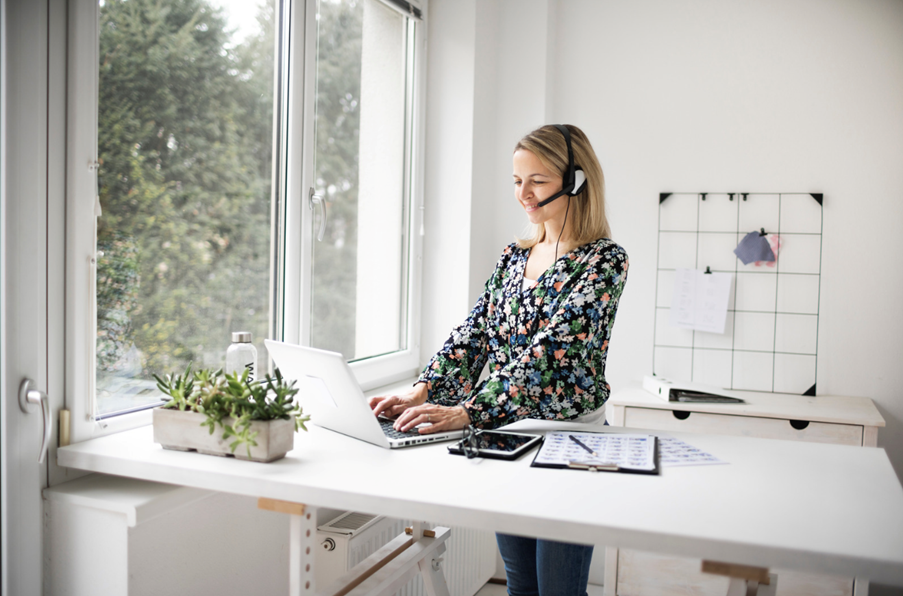
Taking frequent breaks
Taking regular breaks from sitting allows you to break up long periods of sitting which promotes better circulation and reduces strain that prolonged sitting places on your joints and muscles.
Physical activity
Research shows that regular physical activity helps to strengthen muscles and thereby resist the negative effects of desk-based work by improving posture and alleviating lower back pain.
Postural changes
Postural changes help to reduce stress on muscles and joints which can thereby prevent or alleviate chronic pain.
Stretching
Stretching is a simple, yet highly effective method that can be used to relieve muscle tightness and improve flexibility, both of which are crucial in managing back pain. Incorporating regular stretching into your routine helps ease tension and prevent stiffness from long hours of sitting and thereby alleviates pain.
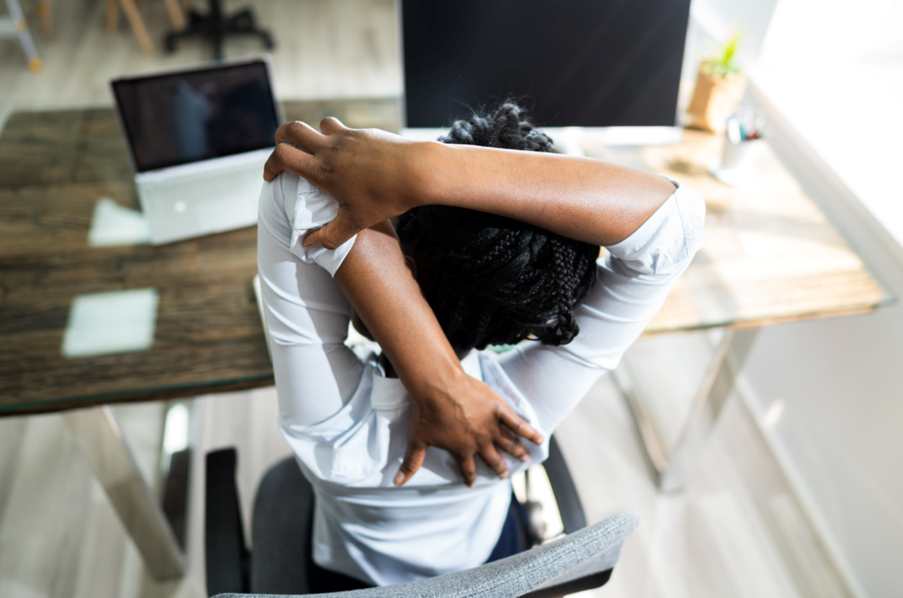
How the BeUpstanding program can provide further insights on use of sit less, move more strategies for workers with lower back discomfort
As part of BeUpstanding, participants, are asked to fill out a survey before they start the program and then again at the end of the program.
At each survey, participants are asked to rate their experience of musculoskeletal discomfort within the past 7 days on a scale of 0-10, where 0 indicated no discomfort at all and 10 indicated severe discomfort.
Participants are also asked at each survey their usage of 21 different strategies that we had found people commonly do to sit less and move more – things like standing up when taking a call, using the stairs instead of the lift, or having a walk and talk meeting. Response options were never, rarely, sometimes, often, and very often/always for how often they used the strategies over the past month.
What did we look at?
For this analysis, we were particularly interested in whether strategies used to sit less and move more differed with differing levels of lower back discomfort. We divided participants into two groups based on their reported musculoskeletal discomfort: low (discomfort score of 3 or below) and high (discomfort score of 4 of above). We looked at those who used the sit less / move more strategy at least sometimes.
We kicked things off by conducting a cross-sectional analysis at baseline to pinpoint which strategies were the most popular and which ones were less common. This used data from 1686 staff from 82 different workplaces.
But we didn’t stop there – we also tracked how workers changed their strategy usage throughout the course of the intervention by looking at changes within and between discomfort groups. Since we needed to match participants’ data before and after the program, we worked with a smaller sample of 324 staff across 60 workplaces. We accounted for differences between workplaces and adjusted for age and sex.
What did we find?
Before participants started BeUpstanding, the most common strategies used at least sometimes were:
- Taking work breaks/lunch away from their desks (81%)
- Using bathroom breaks as an opportunity to sit less and move more (80%)
- Using filling up their water bottle or glass as a strategy to get up regularly (79%)
- Changing posture either by sitting, standing, or moving when they were feeling tired or uncomfortable/listening to body (78%)
- Walking to talk to a colleague rather than sending them an email or phoning (71%)
The least common strategies used were:
- participating in an activity class at workplace (7%)
- having a walk and talk meeting (13%)
- using a timer/alarm/device-based prompt as a reminder to stand/move more (14%)

Did strategy usage vary depending on if they had high discomfort or not?
For the most part, there was virtually no difference between people with more or less back discomfort and how often they did these strategies. The only significant difference found was that those with more lower back discomfort were 1.3 times more likely to use a sit-stand desk at least sometimes. So, why are we seeing this? Well, it may be because people with high discomfort are more likely to have a desk because of their condition, given many workplaces provide sit-stand workstations on a case-by-case basis rather than as standard.
Change in strategies following BeUpstanding
When we looked at the change scores for post program vs pre-program frequency of strategy usage, we observed that everyone had similar changes (typically increases) in their strategy usage, regardless of whether or not they had high lower back discomfort. The overall increase in strategy usage frequency across both pain groups may suggest that participants find these strategies to be beneficial, regardless of their initial discomfort levels.
So, what does this mean?
While we’ve gained valuable insights into what people are doing, we recognise that frequency alone doesn’t capture how the strategies were used. Things like shorter standing durations or the type of stretching weren’t fully captured. Furthermore, outcomes can vary based on how consistently and correctly they are applied. For example, using a sit-stand desk incorrectly could worsen back pain, while someone using it more effectively might see better results. Similarly, asking participants whether they use a strategy “sometimes” is highly subjective.
Measurement error is also a factor: we asked about pain over the past 7 days, which may not accurately reflect chronic pain. Our smaller sample size for the change data (324 staff from 60 workplaces) may limit how much we can generalize the findings.
Nevertheless, the overarching message is clear: by incorporating these strategies into your daily routine, you can take charge of your wellbeing and may help relieve that lower back discomfort. Don’t wait—small changes today can lead to a healthier, more comfortable tomorrow!
This blog article was written by Zahra Kelana, a third-year Health Science student (Clinical Stream), during her placement with the BeUpstanding team at School of Human Movement and Nutrition Sciences, The University of Queensland.
![]()

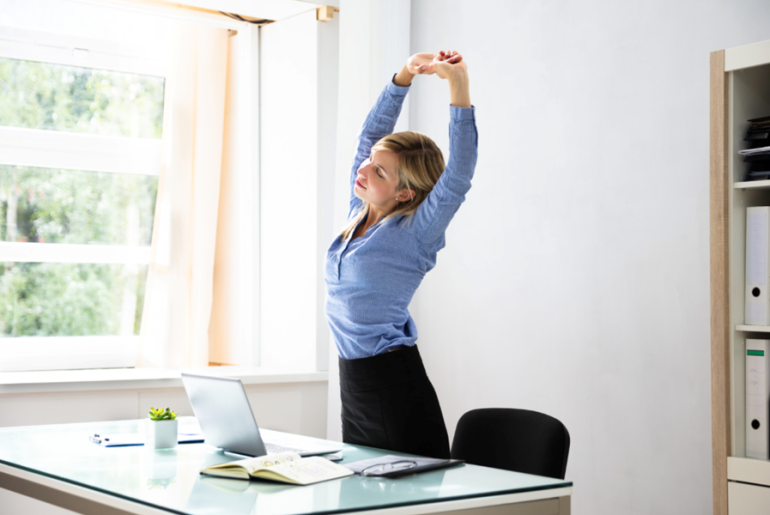





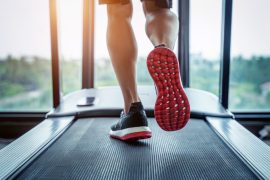
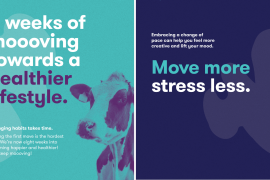
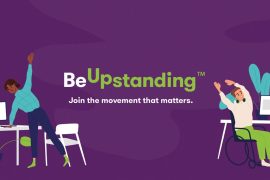
Comments are closed.